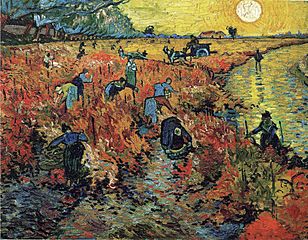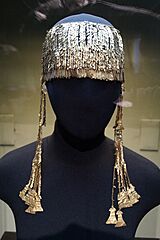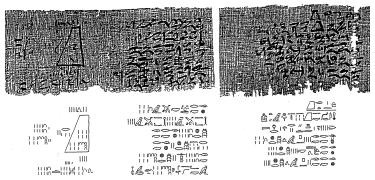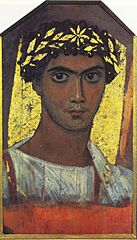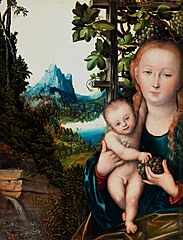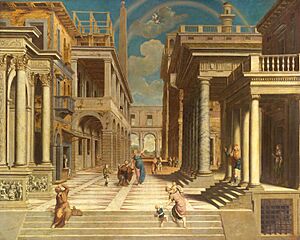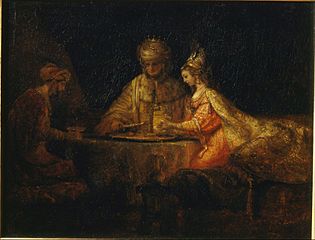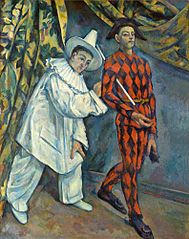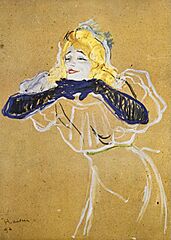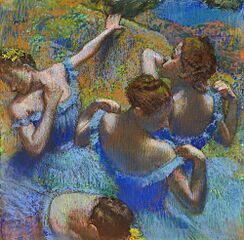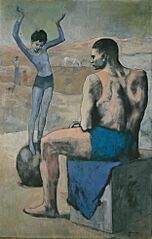Pushkin Museum facts for kids
| Государственный музей изобразительных искусств имени А. С. Пушкина | |
 |
|
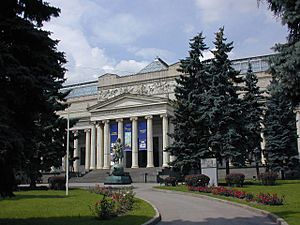
Pushkin Museum of Fine Arts
|
|
| Established | 1912 |
|---|---|
| Location | 12, Volkhonka Street, Khamovniki, Moscow, Russia |
| Type | Art museum |
| Founder | Ivan Tsvetaev |
| Public transit access | |
The Pushkin State Museum of Fine Arts is a really big museum in Moscow, Russia. It's the largest museum in the city that focuses on European art. You can find it on Volkhonka street, right across from the Cathedral of Christ the Saviour. Since 1981, a cool music festival called Sviatoslav Richter's December Nights has been held there every year.
Contents
Why is it Called Pushkin Museum?
Even though it's called the Pushkin Museum, it's not directly connected to the famous Russian poet Alexander Pushkin. The museum was named after him in 1937, which was 100 years after he passed away.
How the Museum Started
The museum was first started in 1912 by a professor named Ivan Tsvetaev. He was the father of another famous poet, Marina Tsvetaeva. Professor Tsvetaev convinced a rich person named Yury Nechaev-Maltsov and an architect named Roman Klein that Moscow really needed a museum for fine arts.
A Look at the Museum's History
Over the years, the museum has seen many changes.
Artworks Found and Exhibitions
During the Bolshevik Revolution, many artworks by French artists were taken and later stored away. Some of these works were found again in 2019 and returned to the Pushkin Museum. In 1981, the museum hosted a big exhibition called "Moscow-Paris." More recently, in 2016, art experts found 59 Italian Renaissance sculptures in the museum that had been missing since World War II.
Changes in Leadership
In March 2022, some of the museum's leaders decided to leave their jobs. They did this to show their disagreement with Russia's actions in Ukraine.
The Museum Building
The main building of the Pushkin State Museum of Fine Arts was designed by Roman Klein and Vladimir Shukhov. It took a long time to build, from 1898 until 1912. Ivan Rerberg was in charge of the building's structure for the first 12 years.
Plans for Expansion
In 2008, there were plans to make the museum even bigger and better. A large expansion project was confirmed in 2009. Famous architect Norman Foster was first involved, but his firm later left the project in 2013. In 2014, Russian architect Yuri Grigoryan took over. His design includes new modern buildings and also protects an old gas station from the 1930s by putting it inside a glass structure.
What You Can See: The Collections
The Pushkin State Museum of Fine Arts has a huge collection! It includes about 700,000 items. These are paintings, sculptures, drawings, decorative art, photographs, and even ancient objects.
Amazing Paintings

The oldest artworks in the museum are pieces of Byzantine art, like mosaics and icons. There's also a smaller collection of early Italian paintings. The room for early Italian art opened in 1924.
Drawings and Prints
The museum has a special department for prints and drawings. It was started in 1924. This department received many items from the Moscow Public and Rumyantsev Museum. In 1861, Emperor Alexander II gave over 20,000 prints from the Hermitage Museum to this collection.
Wonderful Sculptures
The museum's collection of Western European sculptures has more than 600 pieces. It includes artworks from the 6th to the 21st centuries. Many sculptures came from private collections after the revolution.
Decorative Art Pieces
The collection of decorative art from Europe has about 2,000 items. Some of these are from the Middle Ages, and the collection is very diverse.
Ancient Treasures: Archaeological Collection
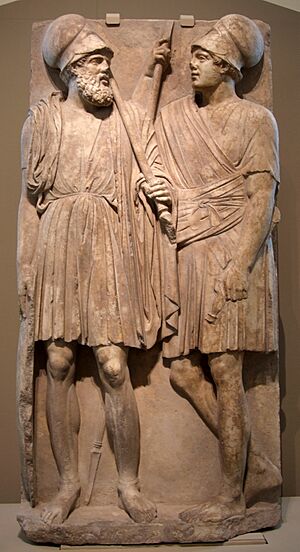
The Museum of Fine Arts was originally planned to be a museum of classical arts. So, ancient artifacts were a very important part of its collection. Ivan Tsvetaev, the museum's founder, was an expert in ancient art.
From Ancient Egypt
Many objects in Hall No. 1 have been on display since the museum opened in 1912. They came from the collection of Vladimir Golenishchev, an expert in ancient Egypt.
Ancient Civilizations
The museum also has real artifacts from Southwest Asia. These are based on the collection of Vladimir Golenishchev, who studied ancient cultures.
Greek and Roman Antiquity
The museum's antique collection includes over 1,000 real artifacts. These are vessels, small statues, and larger sculptures from ancient Greece and Rome.
Tsvetaev's Cast Collection
The museum has a unique collection of casts and copies of famous sculptures. These were common in European museums in the 1800s. Tsvetaev wanted to show modern sculptures too, with copies of works by artists like Auguste Rodin.
Coins and Medals: Numismatic Collection
Today, the museum's Numismatics Department has over 200,000 coins, medals, and other related items. It also has a library with 3,000 books about coins. This collection started at Imperial Moscow University.
How the Coin Collection Grew
In 1888, the university's coin collection was split up. Parts of it became the basis for major collections in Moscow. In 1912, ancient and European coins from the university were moved to the Fine Arts Museum. By 1925, these items were organized into a special "Numismatic Cabinet." In 1945, it became its own department.
The Museum Quarter Project
Work on creating a "Museum Quarter" for the Pushkin State Museum of Fine Arts began in the late 2000s. The main building of the museum is being reconstructed between 2019 and 2023 to make it even better for visitors.
Images for kids
-
The Red Vineyard, by Vincent van Gogh, 1888. This was the only painting van Gogh sold during his lifetime.
-
Annunciation by Sandro Botticelli, around 1495-1498.
-
Madonna and a Child by Lucas Cranach the Elder, around 1520.
-
Ahasuerus and Haman at the Feast of Esther by Rembrandt, 1660.
-
Death of Sophonisba by Giambattista Pittoni, from the first half of the 18th century.
-
Fastnacht (Mardi Gras) by Paul Cézanne, 1888.
-
Yvette Guilbert by Henri de Toulouse-Lautrec, 1894.
-
Blue Dancers by Edgar Degas, 1897.
-
Acrobat on a Ball by Pablo Picasso, 1905.
Museum Directors
Many people have led the Pushkin Museum over the years. Here are some of the directors:
- 1911—1913 — Ivan Tsvetaev
- 1913—1921 — Vladimir Konstantinovich Malmberg
- 1921—1923 — Vladimir Egorovich Giatsintov
- 1923—1928 — Nikolai Ilyich Romanov
- 1928—1929 — Fyodor Ilyin
- 1929—1932 — Vyacheslav Pavlovich Polonsky
- 1932—1933 — Boris Evgenievich Etingof
- 1933—1935 — Joseph Moiseevich Byk—Bek
- 1935—1936 — Alexey Nikolaevich Vasiliev
- 1936—1939 — Vladimir Eifert
- 1939—1944 — Ivan Ivanovich Korotkov
- 1941—1942 — Vera Krylova
- 1944—1950 — Sergey Dmitrievich Merkurov
- 1950—1954 — Nikolay Slonevsky
- 1954—1961 — Alexander Ivanovich Zamoshkin
- 1961—2013 — Irina Antonova
- 2013-March 2023 — Marina Loshak
- 2023—2025 — Elizaveta Stanislavovna Likhacheva
- 2025—now — Olga Nikolaevna Galaktionova


